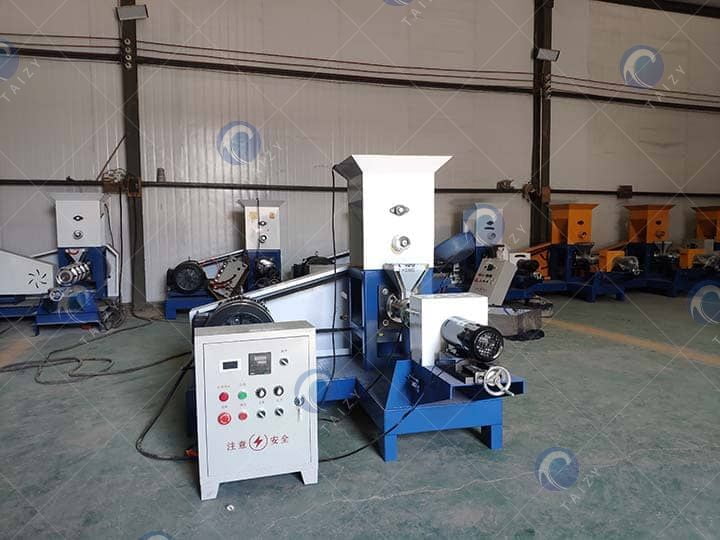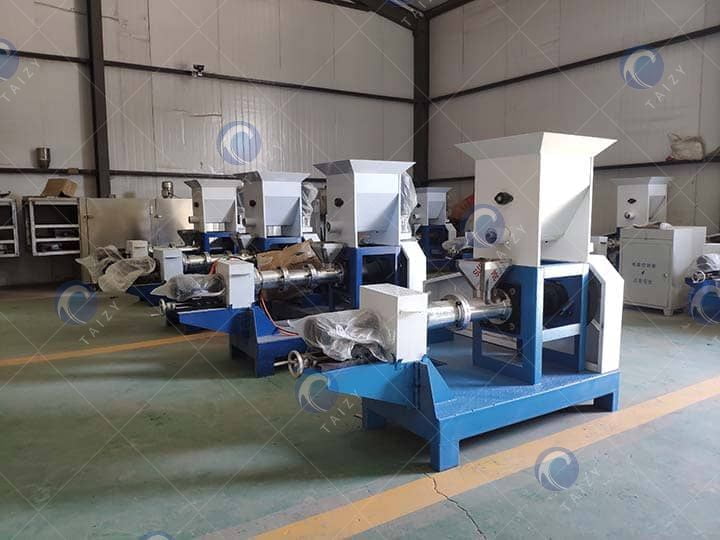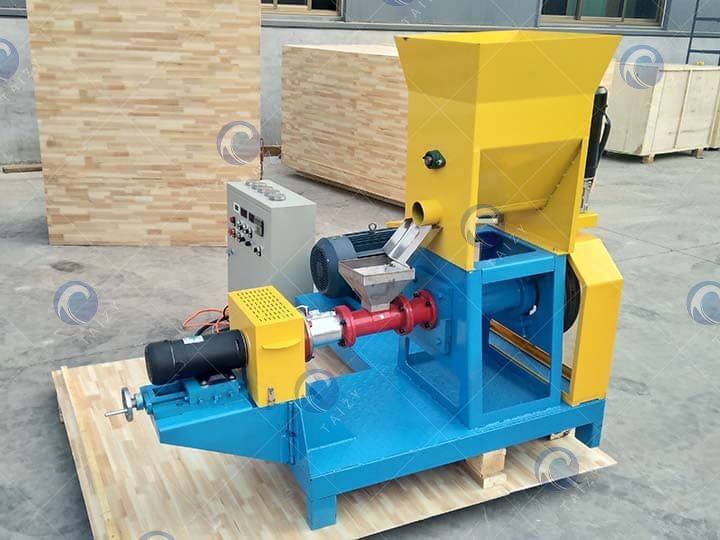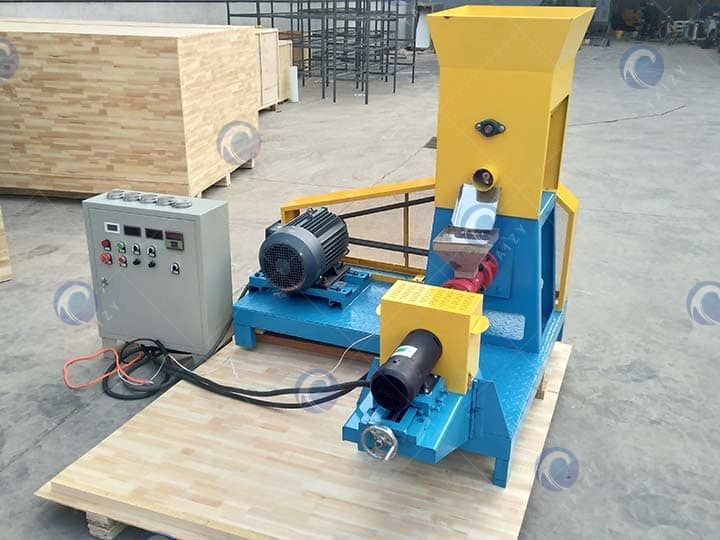Fish feed pelleting machine | Puffed fish feed extruder
| Model | DGP70 |
| Capacity(kg/h) | 180-250 |
| Feeding power(kW) | 18.5 |
| Cutting power(kW) | 0.4 |
| Size(mm) | 1600*1400*1450 |
The Fish feed pelleting machine efficiently produces high-quality, nutritious feed pellets by blending essential ingredients such as fishmeal, cornmeal, and flour in balanced proportions. It is suitable for preparing feed for a wide range of animals, including aquatic species like fish and terrestrial pets such as dogs and cats.
Designed for versatility, this machine can be powered by either an electric motor or a diesel engine, ensuring consistent operation in different working environments. With a production capacity ranging from 40 to 450 kg/h, it can create pellets in various sizes from 1mm to 13mm. Additionally, customization options are available to meet specific needs regarding pellet size, shape, and formulation.
Fish feed pelleting machine for sale
We offer a comprehensive range of automatic fish feed pelleting machines, ideal for processing materials like grains, straws, grass, and rice husks into floating fish pellets. The extruding and rubbing mechanism ensures the pellets are fully cooked for better nutrition.
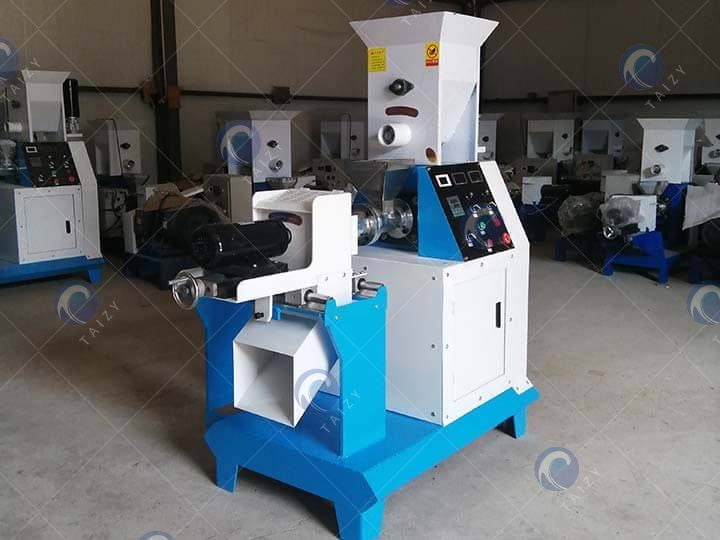
Key features
- Flexible power options. Machines can run on electric motors or diesel engines to suit different environments.
- Pellet size range. 1-13mm, with six standard molds included per machine for free.
- Customizable molds. Tailored shapes and sizes are available to meet specific customer needs.
- Popular models. DGP40, DGP60, DGP70, DGP80, and DGP100, along with larger models for higher production demands.
Efficiency tips
- Pre-processing raw materials using a grain grinder or chaff cutter can improve efficiency, saving time and energy during pellet production.
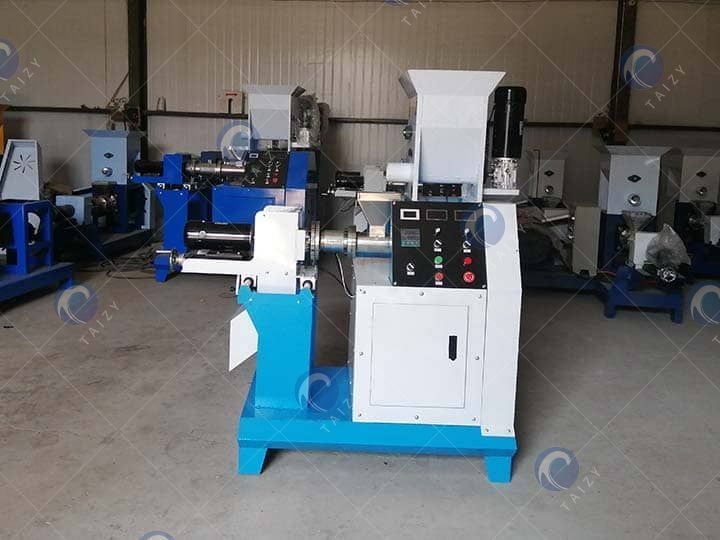
This versatile machine is ideal for aquaculture farms or pet food manufacturers seeking consistent, high-quality feed.
The detailed specification of the fish feed pelleting machine
| Model | Capacity(kg/h) | Feeding power(kW) | Cutting power(kW) | Screw diameter(mm) | Size(mm) |
| DGP40 | 40-50 | 5.5-7.5 | 0.4 | Φ40 | 1260*860*1250 |
| DGP60 | 150 | 15 | 0.4 | Φ60 | 1450*950*1430 |
| DGP70 | 180-250 | 18.5 | 0.4 | Φ70 | 1600*1400*1450 |
| DGP80 | 300-350 | 22-27 | 0.4 | Φ80 | 1850*1470*1500 |
| DGP100 | 400-450 | 37 | 1.1 | Φ100 | 2000*1600*1600 |
How does the fish feed pelleting machine work?
The fish feed pelletping machine is designed for simple operation, with a straightforward process that ensures efficiency. However, proper preheating before starting the production is essential to achieve optimal performance and avoid issues during operation. Below is an outline of the machine’s process, including preheating steps.
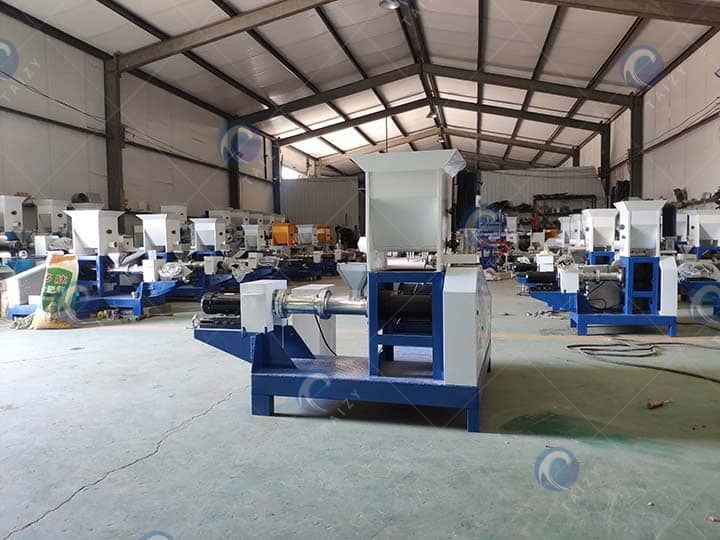
- Preheat the machine by ensuring the hopper is empty, removing the discharge box, and starting the main motor before the feeding motor.
- Feed gradually by adding materials slowly and increasing the amount until it reaches a stable, desired level.
- Monitor the temperature and allow it to rise to between 50°C and 80°C near the discharge port.
- Stop feeding temporarily once the target temperature is reached, letting the remaining material exit the puffing chamber.
- Begin production by maintaining a steady and consistent material flow to ensure uniform, high-quality pellets.
- Finish the process by confirming the chamber is completely empty before turning off the machine to prevent blockages and ensure optimal performance.
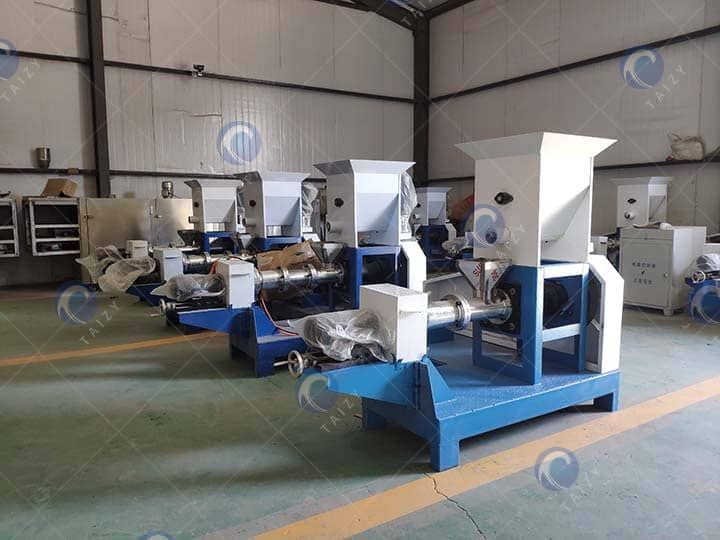
Following these steps ensures smooth operation and consistent pellet quality, making the machine reliable for fish feed and pet food production.
Advantages of fish feed extruder machine
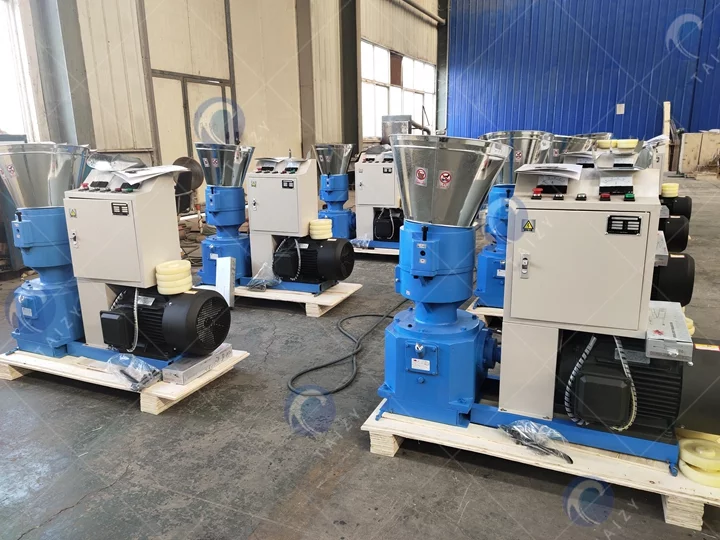
- High adaptability: Available in multiple sizes to suit both small-scale and large-scale production needs.
- Broad application: Produces aquatic feed, pet food, and specialty feeds using materials like soybeans, corn, and cottonseed meal.
- Flexible feeding: Equipped with an adjustable-speed automatic feeder for efficient material handling.
- Compact design: Features a small footprint, low noise, and easy, low-maintenance operation.
- Moisture retention: Maintains optimal moisture levels in pellets to prevent spoilage during storage.
- Higher profitability: Enhances animal growth and feed efficiency, boosting overall returns.
- Better digestibility: Creates strong, smooth pellets that improve nutrient absorption.
- Health protection: Kills parasites and pathogens during extrusion, promoting animal health.

Applications of fish feed pelleting machine
The fish feed extruder is widely used in aquaculture and animal feed industries. It produces floating and sinking feed pellets for fish, shrimp, and crabs, enhancing feed efficiency.
Additionally, it serves pet food production, creating pellets for dogs, cats, and ornamental fish. The machine also processes raw materials like soybean meal and corn, improving nutrient absorption. It can produce specialized feed for animals like ducks and foxes.
During operation, it detoxifies certain ingredients and sterilizes feed, ensuring safe consumption. This versatility makes the extruder essential for both aquaculture farms and pet food manufacturers.
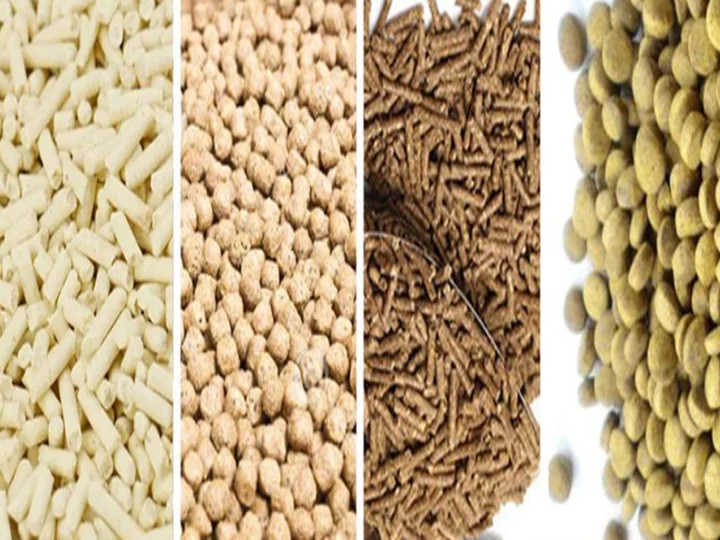
FAQs about fish feed pellet machine
1. How does the automatic feeder improve production efficiency in the Fish feed pelleting machine?
The automatic feeder ensures consistent material flow, reducing manual intervention and feeding fluctuations, which stabilizes pellet quality and boosts overall efficiency.
2. Why is maintaining proper pellet moisture important for storage and feed quality?
Balanced moisture prevents pellets from becoming too dry or moldy, extending shelf life while preserving nutritional value and texture.
3. How does extrusion help eliminate parasites and pathogens in feed production?
During extrusion, high temperature and pressure effectively destroy harmful microorganisms, ensuring the feed is hygienic and safe for animal consumption.

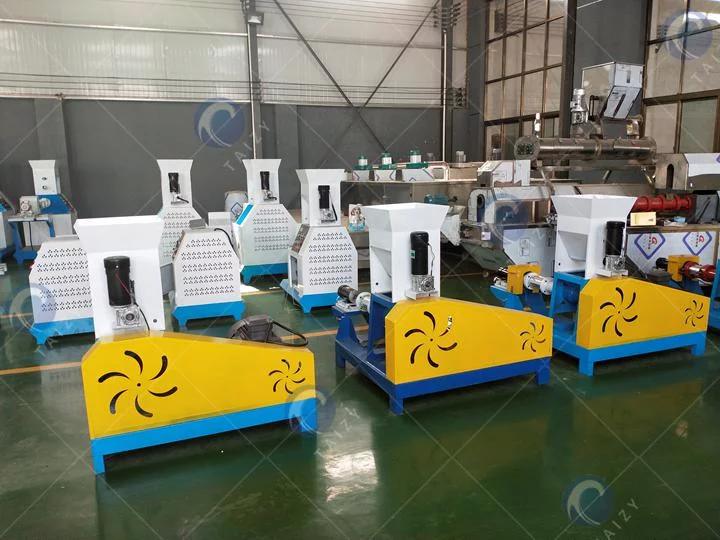
Operational safety guidelines for fish feed pelleting machine

- Avoid outlet hazards. Operators must not stand near the outlet to prevent accidents from material ejection.
- Wear protective gear. Always use heat-resistant gloves to prevent burns.
- Clear the machine. Ensure no tools or foreign objects are inside before starting.
- Monitor operations. Regularly check the machine for irregularities and adjust promptly.
- Handle discharge box with care. Release internal pressure cautiously before removing to prevent unexpected material expulsion.
Contact us
If you aspire to achieve greater success in aquaculture, we cordially invite you to explore the limitless possibilities offered by the Fish Feed Pelleting Machine.
Contact us now!

